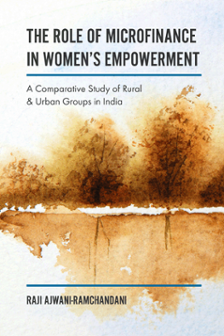
A ‘Bad Loans’ Bank for India
The Role of Microfinance in Women’s Empowerment
ISBN: 978-1-78714-426-2, eISBN: 978-1-78714-425-5
Publication date: 4 October 2017
Citation
Ajwani-Ramchandani, R. (2017), "A ‘Bad Loans’ Bank for India", The Role of Microfinance in Women’s Empowerment, Emerald Publishing Limited, Leeds, pp. 273-274. https://doi.org/10.1108/978-1-78714-425-520171014
Publisher
:Emerald Publishing Limited
Copyright © 2017 Emerald Publishing Limited
The discourse about starting a ‘bad bank’ soon after the 8 November 2017 demonetisation exercise has resulted in mixed reactions. The idea of floating a separate entity to offload the non-performing assets (NPAs) gained ground in late 2015 when the Insolvency and Bankruptcy Bill 2015, known commonly as the Bankruptcy Code, was presented in the Lok Sabha (Indian term for the House of Commons).
The rationale for this has been the rather worrisome trend of ballooning of the stressed loans. India has the second largest number of government-owned banks after China (24 banks). These banks referred to as public sector banks (PSUs) account for 70% of the market share of loans. However, over the last couple of years, the quality of stressed loans has been increasing. The Reserve Bank of India had announced a Strategic Debt Restructuring (SDR) scheme in June 2016 and had conducted an asset quality review (AQR) that resulted in more loans than were previously estimated to be classified as NPAs.
According to a Credit Suisse research report released on 19 September 2016, 1 the aggregate NPAs of the Indian banking sector stood at Rs 6.5 trillion, or 8.6% of loans, at the end of June 2016. Adding another 8% of loans, which is also estimated to be impaired due to various reasons (combination of restructured, lent to a risky sector etc.), the actual amount of NPAs is estimated to be 20%. India’s NPA levels place it among the worst-performing major economies of the world. 2 Bad loans impact the growth and the capital available to banks. The Indian government had infused funds into the PSUs in 2016. 3 The Indian banking system as a whole needs more than Rs 3.9 trillion between fiscal 2015 and 2019 to meet BASEL 3 capital norms. Of this amount, Rs 1.8 trillion is only Tier 1 core capital for the PSUs. Creating a bad bank may help to handover the bad loans portfolio to a specialised entity that can focus on recovery and remedy since the recovery rates of the NPAs have become worse over the past few years. 4 However, some contrarian opinions are as follows: (1) This needs to be approached cautiously because creating such an entity can actually foster ‘moral hazard’. (2) Large corporates have debt spread across a number of banks that makes the resolution difficult. Any activity of this nature should be done cautiously as the implementation of the provisions of the Bankruptcy Code may address some of the issues.
The demonetisation exercise, which was announced on 8 November 2016, placed additional strain on the already stressed banking system because nearly 86% of the currency in the banking system was abolished. Economic growth was adversely impacted due to a weak credit and investment sentiment.
Notes
Source: http://www.livemint.com/Opinion/osD4kDT3vNxDgGu5a4E5yJ/Indias-big-bad-loan-problem.html. Accessed on 5 March 2017.
India places seventh in a compilation of %age of NPA out of total gross loans. The other countries before India are: Greece 36.99% (first), Ukraine 30.37% (second), Nigeria 11.73% (third), Pakistan 11.13% (fourth), Hungary 9.97% (fifth), Russia 9.65% (sixth) and India 8.6% (seventh).
In 2016 the government injected a sum of Rs 229.15 billion for recapitalising 13 PSUs (Source: http://www.thehindu.com/business/Industry/Centre-injects-Rs.22915-cr-into-13-public-sector-banks/article14497697.ece).
The rate of recovery of NPAs was 10.3%, or Rs 2,28,000 million, out of the total NPAs of Rs 2,21,400 crore during fiscal ended March 2016, against Rs 3,08,000 million (12.4%) of the total amount of Rs 24,82,000 million reported in March 2015, as per data from the Reserve Bank of India (RBI). The rate of recovery was 18.4%, or Rs 3,20,000 million out of the total NPAs of Rs 17,38,000 million in March 2014. The recovery rate was even higher at 22% (Rs 23,300 crore) in March 2013 out of the total reported NPAs of Rs 1,05,700 crore.
- Prelims
- Chapter 1 Introduction
- Chapter 2 Literature Review
- Chapter 3 Conceptualising Empowerment: A Theoretical Model
- Chapter 4 Nationalisation to Demonetisation: An Overview of the Indian Banking Sector
- Chapter 5 Microfinance in India – The Self-Help Group Federation and Joint Liability Models
- Chapter 6 Data and Methods
- Chapter 7 An Overview of the MFI Organisations: Annapurna Pariwar (AP) and GMSS
- Chapter 8 Observations and Discussion – Rural Area
- Chapter 9 Observations and Discussion – Urban Area
- Chapter 10 Vetale Village: Then and Now (2013–2016)
- Chapter 11 Concluding Remarks
- Appendix 1 A ‘Bad Loans’ Bank for India
- Appendix 2 Less Cash or Cashless: What about the Common Man?
- References
- Index